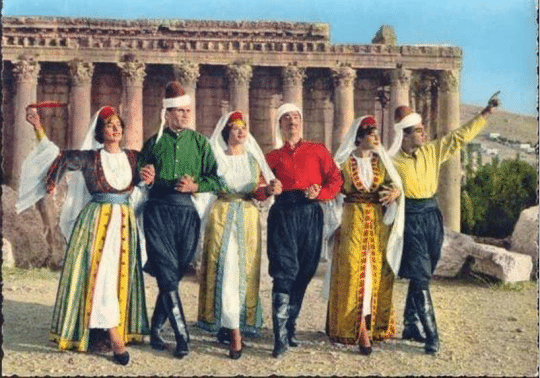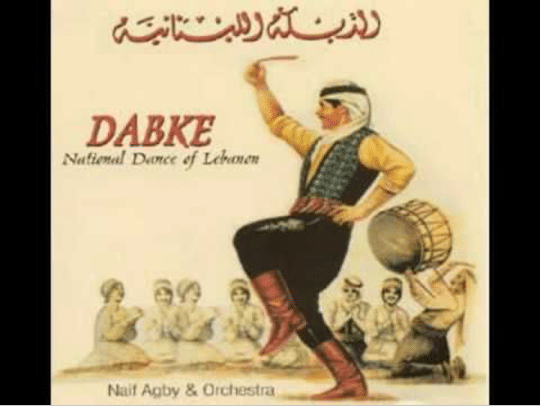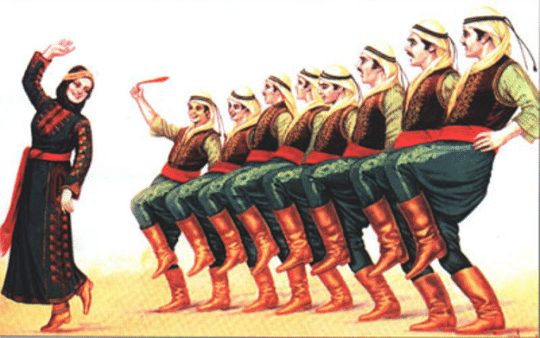The Lebanese are known for their love of music, songs, and dance. The most well-known and traditional Lebanese dance is called Dabkeh or “stomping of the feet.” It is a tradition that has been taught and passed down for centuries and has withstood the trials of migration as it lives on through the children of Lebanese immigrants.

The history of the Lebanese Dabkeh goes back to olden days when snow used to cover the roofs of the houses in the tight-knit Lebanese villages. The snowfall would be so great, that in order to protect the roofs of the houses from cracking, the villagers would form a line on the roofs and stomp on the snow/mud while yelling “Alawneh” which means “let’s go and help.” This then turned into “Ala Dalouna” and spurred many songs with that lyrics and title. The villagers had to be unified and on rhythm with their moves to effectively stomp the snow off. It wasn’t long before this practice, born out of necessity, turned into one of the richest aspects of Lebanese culture.

The villagers would stomp their feet to the music of the various woodwind and percussion instruments associated with the melodies of Dabkeh, like the mijwiz (double flute). Nowadays, the mijwiz is still the main instrument, in addition to the derbakeh (hand-held drum), that provides energetic beats to every spontaneous gathering in Dabkeh.
In a way, dancing Dabkeh helped those villagers stay warm through the bitter cold of the winter and sheds light on the innate characteristic of the Lebanese community to help one’s neighbor. We see that reflected beautifully in the Dabkeh line as it starts from right to left, with everyone holding hands, stomping their feet to the beat of the music, and keeping a unified rhythm. The world is our dance floor!
The standard Dabkeh step is rocking back and forth from your left foot, in the front, to your right and stomping your left foot twice. You can even spice up the basic steps with some hops and turns. Normally, the Dabkeh line has a leader who can make more artistic and difficult steps while holding a masbaha, or beads line, handkerchief, or stick, and controls the energy and tempo of the line. You could also be like me, and compliment or challenge the leader by being their second in line or dancing outside of the line altogether.

My holidays can usually be associated with beautiful random outbursts of song and dance and Dabkeh is at the center of it all. It may have begun in snow-piled villages but it has blossomed into a dance for all seasons and occasions. I dance Dabkeh holding the traditions of my people in my heart with the goal of sharing that lively energy with the rest of the world.
Tamara Alchoufete is a Work-Study student from the University of Pittsburgh and works in CMNH’s Section of Anthropology at the Edward O’Neil Research Center. Museum staff, volunteers, and interns are encouraged to blog about their unique experiences and knowledge gained from working at the museum.
